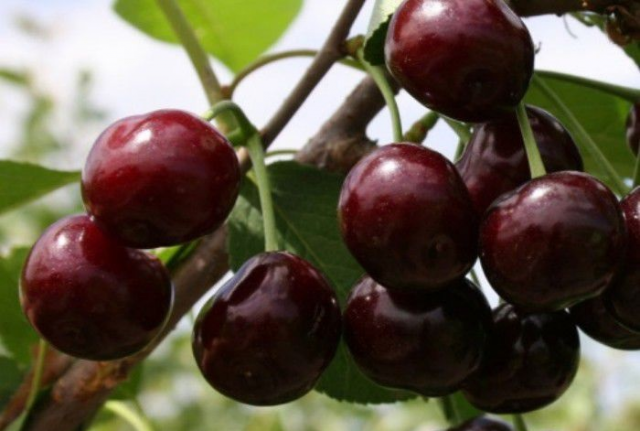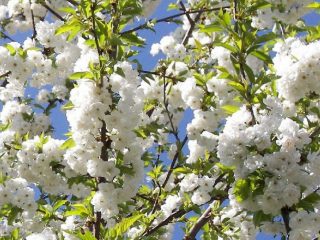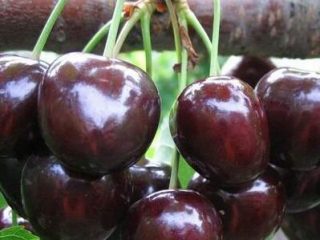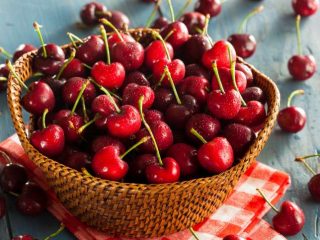Content
Cherry Big Star is popular among gardeners due to its unpretentious and fertile culture. Despite the warmth, sweet cherry has perfectly adapted to the cooler climate, typical of the regions of the Moscow region and Siberia.
Breeding history
The Big Star cherry litter was bred by breeders of the Italian Department of Woody Crops (DCA-Bologna). The research was carried out at the Center for Crop Production Research (CRPV), which is also located in Italy.
The purpose of the selection was to develop large-fruited high-yielding varieties of sweet cherry, which, moreover, would have increased resistance to climatic whims. At the same time, work was underway to test the Keep in Touch System, a model of shelters that protected trees from the negative effects of atmospheric factors.
The bred seedlings, obtained by crossing the Californian, Spanish and Italian varieties of sweet cherries, were subjected to the molding of the trunk and crown during the growth process. The experiment involved 3 shapes: thin spindle, V-system, thin spindle. The first 2 options proved to be the best.
Description of culture
The tree develops intensively, forming a dense compact crown by the third year of life. The berries are large in size, the weight of one reaches 9-12 grams. The shape of the sweet cherry is rounded and slightly flattened from the sides. Under the dark red skin hides a scarlet juicy pulp of a dense consistency. The surface of the fruit is smooth with a characteristic shine. Red-violet strokes are clearly visible on it. You can learn more about cherries by watching the following video:
Cherries can be grown in the southern countries of the European territory, including Belarus, Ukraine, and the southwestern part of Russia. Reviews of Big Star cherries indicate that the culture is perfectly taking root in the Moscow region and even in the Irkutsk region.
Characteristics
You can evaluate the advantages and characteristics of sweet cherries by familiarizing yourself with the main characteristics of the plant.
Drought resistance, winter hardiness
The characteristics of the variety indicate the high resistance of the crop to drought. In the absence of rain, the tree will bear fruit no worse if irrigated periodically.
Big Star cherries are also well adapted to temperature extremes and frosts. To prevent freezing, it is recommended to properly prepare the garden in the fall, creating a layer of moss and dry leaves in the root zone. The maximum culture resistance corresponds to minus 35 °.
Pollination, flowering period and ripening times
According to the description, Big Star sweet cherry belongs to medium-late ripening varieties. The first fruiting season begins 4-6 years after planting the seedling. In May, the tree is densely covered with small flowers, and technical ripeness is observed in the second half of June.
The first ripe fruits on the tree appear in the twentieth of June (in the southern regions, the date is shifted 7-10 days earlier). In the photo of the Big Star cherry, you can see how tightly ripe berries fit the branches.
Productivity, fruiting
The cherry harvest season falls in the second half of June - July.On average, 45 kg of fruit is harvested from a tree with proper care. The fruiting period lasts 3-4 weeks. The peculiarity of the variety is a stable yield in each new season.
Disease and pest resistance
Cherry is resistant to typical diseases of stone fruit crops. Due to its strong immunity, the culture is used for growing in personal plots and for industrial breeding.
Due to its good immunity, the tree tolerates the invasion of harmful insects, but this does not mean that the sweet cherry will survive without special treatments. The culture needs planned preventive measures aimed at preventing damage to leaves, bark and fruits by pests.
Advantages and disadvantages
The popularity of the variety is due to the following advantages of the plant:
- compact size of the crown of a medium-sized tree;
- long fruiting period (June to July);
- simple care that does not require planting a relative or vaccination, which is explained by the ability to self-pollination;
- frost resistance;
- excellent taste characteristics;
- high productivity;
- good transportability;
- versatility of the berry (suitable for preservation, making compotes, juices, fruit wines).
There are practically no drawbacks in the culture due to persistent immunity. In the season of rainfall, which coincides with the period of fruiting, cracking of the berries is observed.
Conclusion
Cherry Big Star is suitable for growing in temperate climates, which is found in most of the middle zone. The culture does not require special care, but it generously endows with a high yield. The variety is suitable for planting in areas with difficult soils.










